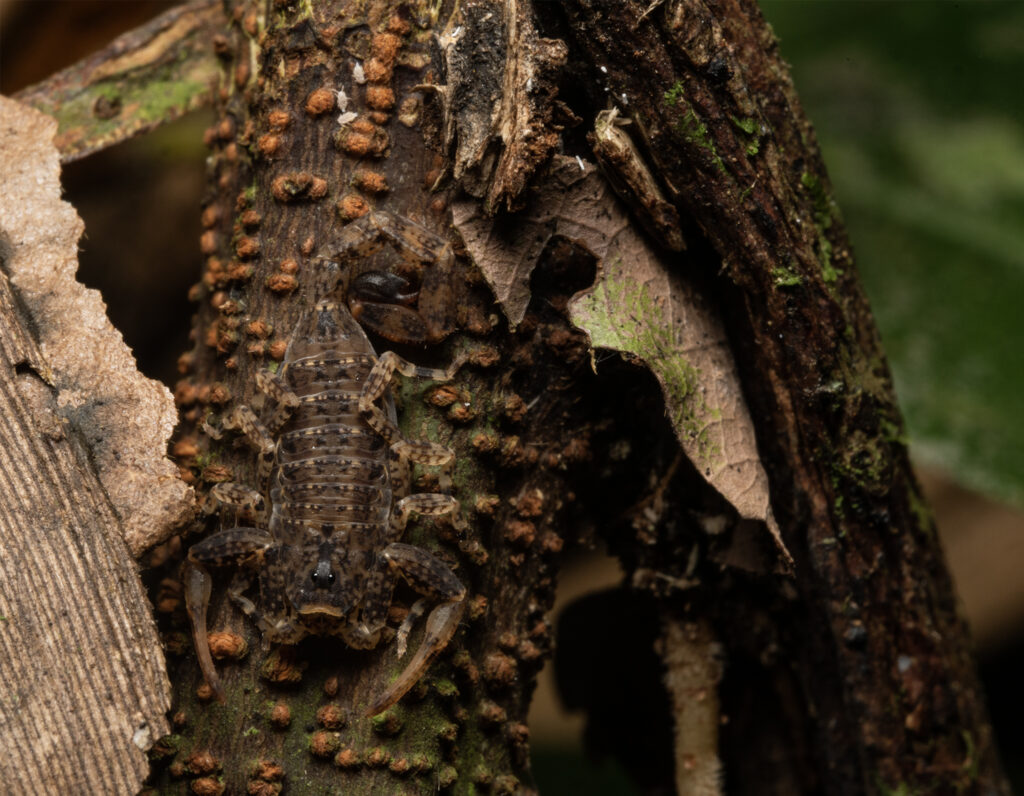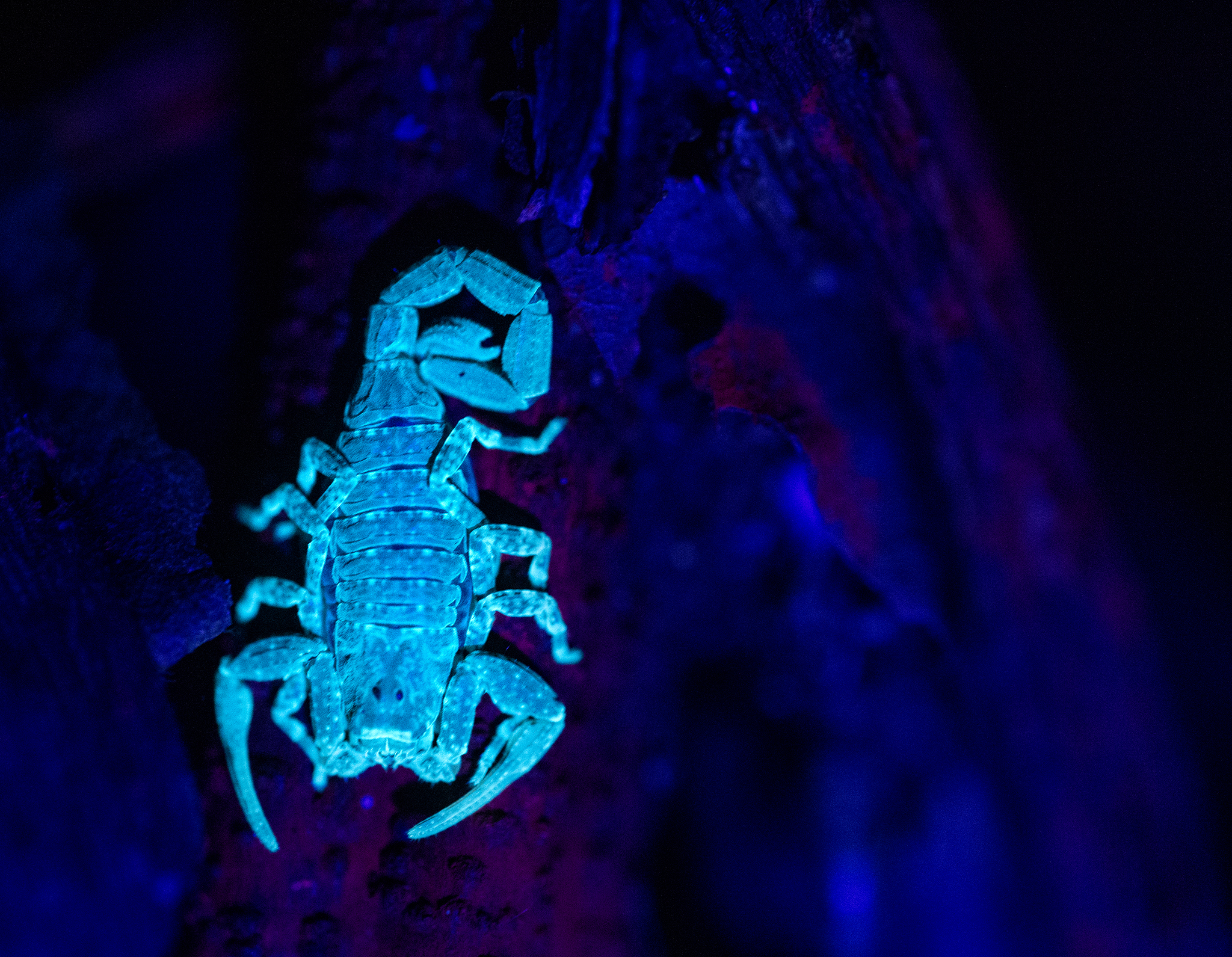Sometimes, in order to spot an animal, you have to get on the right wavelength…
On a recent night walk at Manu Biological Station, my friend Kim spotted this scorpion sitting on a branch. It was barely a centimetre in length and its cryptic colouration allowed it to camouflage perfectly with its surroundings.

So how on Earth did Kim spot it?
Well, she happened to be holding a UV torch at the time, and scorpions glow a vibrant blue when exposed to ultraviolet light!
It’s a phenomenon known as biofluorescence, and it can be observed in a wide variety of animals – from puffins to platypuses. From a physical perspective, we know that biofluorescent animals absorb the high-wavelength ultraviolet light – which is unable to be perceived by humans – and then re-emit the light at a lower wavelength within our visible spectrum. In other words, when UV light hits a biofluorescent animal, the light gets stretched out before bouncing back at us at a wavelength we can see.
However, from a biological perspective, biofluorescence remains somewhat of a mystery. Some argue that it has evolved as a form of camouflage against predators that can see in the UV spectrum, while others believe it might be a by-product of animals removing toxins from their systems. Or, more simply, it may have no explanation at all – an accident of evolution with no inherent role or purpose. But then again, the same thing could be said about anything. Even you 😉
–
Juvenile Thick-Tailed Scorpion (Tityus sp.), Manu Biological Station, Peru


